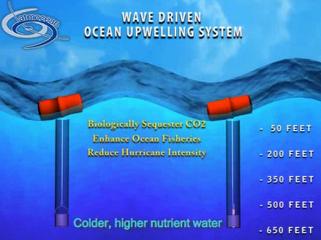"Geome Engineering"
 The latest Popular Science focuses on a variety of techno-fixes for environmental disruption, from home wind and solar to more eco-friendly laptops. Of particular interest, however, is a set of articles given the amusing description of "Duct Tape Methods to Save the Earth." One of the methods is a bit of biotech to make trees that can out-compete rain forest trees in lumber markets, but the other three are essentially ways to make local- and regional-scale changes to a geophysical system in order to mitigate environmental damage. In essence, these three are small-scale geoengineering projects. That's a bit of an ungainly (and arguably contradictory) name, so I've elected to refer to these methods as "geome engineering."
The latest Popular Science focuses on a variety of techno-fixes for environmental disruption, from home wind and solar to more eco-friendly laptops. Of particular interest, however, is a set of articles given the amusing description of "Duct Tape Methods to Save the Earth." One of the methods is a bit of biotech to make trees that can out-compete rain forest trees in lumber markets, but the other three are essentially ways to make local- and regional-scale changes to a geophysical system in order to mitigate environmental damage. In essence, these three are small-scale geoengineering projects. That's a bit of an ungainly (and arguably contradictory) name, so I've elected to refer to these methods as "geome engineering."
[You won't find other references to this concept, however. In looking for the right term to talk about a consistent geophysical region of the size these methods affect, I came across this chart of ecological land classification at Wikipedia. After checking the links and references, I realized that what I needed was the geophysical (or abiotic, in the language of the chart) equivalent of a biome, an ecologically consistent region of plants, animals and soil organisms. In parallel to a biome, then, I've conditionally opted for the term "geome" (but would, of course, welcome suggestions of a more accurate existing term).]
The three geome engineering projects described by Popular Science are artificial wetlands, insulating blankets for glaciers, and wave-driven cold-water pumps for hurricane-prone ocean regions.
Each of the three takes a different approach to the problem of environmental protection. The artificial wetlands attempt to repair a damaged biome by using an artificial matrix as a base for local plants and animals; the matrix material floats, and allows the plant roots and tendrils to reach the water. The insulation blankets for glaciers attempt to protect a threatened area by slowing the warming-induced melting of glaciers; for now, the use of the blankets is limited to ski resorts in the Alps -- but in the tests, the blankets led to an 80% reduction in glacial melting.
The last of the three, the wave-driven cold-water pumps, are to me the most interesting, as they are meant to mitigate the impact of hurricanes by lowering ocean surface temperatures by pulling colder water from 650' down. Warm oceans are the engines for hurricane strength; the designer, Phil Kithil, wants to cut hurricane power by cooling the water.
Dropped from the deck of his ship, spools of barrel-width flexible tubing will unravel to form 650-foot-long cylinders. These are topped by buoys that bob up and down with each passing wave and drive pumps that draw cool, nutrient-rich water up from the deep ocean. Bigger waves mean more cooling, and, conveniently, big waves precede hurricanes. "So we get cooling only when we want cooling," Kithil says, "when there's a hurricane on the horizon."
Preliminary studies by Kithil's group Atmocean have shown a measurable reduction in sea surface temperatures in limited trials; a larger test, with pumps spread out over a one-third-square-mile section of ocean, is set to commence in August. The test will look not only for a reduction in water temperature, but also any indication of harm to marine life. There is actually a possibility of the system being beneficial to marine ecosystems, as the cooler water would contain nutrients that would promote the re-growth of plankton killed by warming oceans.
The attractive aspect of geome engineering is that, because the effects are more limited, the risks are likely to be similarly limited. The costs are lower, too, making it plausible that lower-income nations could use some of these techniques for ecosystem remediation, geophysical protection, and damage mitigation.





